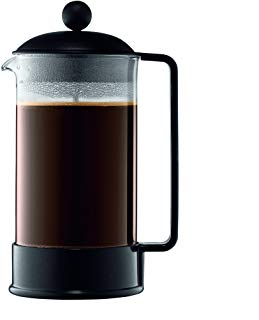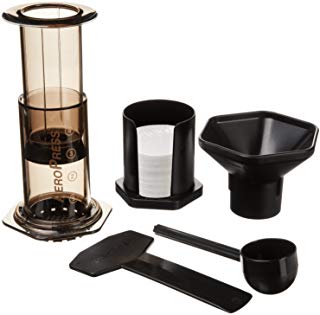User Tools
Table of Contents
Making coffee
With Propane
(or other fuel)
Like with almost all cooking in a van (and anything to do with generating heat), making coffee is much easier when using propane. Heating water on a camp stove uses no electricity, although it does require a bit more labor.
Steeping
 The french press is the most famous of the steeping coffeemakers. They can be challenging to clean in a van galley and many are made of glass, but if coffee is that critical to your existance Jetboil makes a french press kit that runs off of the common propane cylinders
The french press is the most famous of the steeping coffeemakers. They can be challenging to clean in a van galley and many are made of glass, but if coffee is that critical to your existance Jetboil makes a french press kit that runs off of the common propane cylinders
 The aeropress has many RV fans because it is small and made of plastic.
The aeropress has many RV fans because it is small and made of plastic.
Pour-over
Pour-over coffee makers are cones that hold a filter and grounds. Hot water is poured over them usually in a few doses. Melitta is the most famous one. They are typically made of unbreakable plastic and are relatively easy to clean.
With electricity
Electric coffee makers are possible, but are best used when connected to shore power. They use a lot of power, particularly for boondockers.1)
| Small drip | pod | |
| avg watts | 740 | 1200 |
| inverter ineff. | 74 | 120 |
| total watts | 814 | 1320 |
| Amps (W/13) | 62.6 | 101.5 |
| Ah per 5min use | 5.2 | 8.5 |
To compound the problem, coffee is usually brewed in the early morning when batteries are most deeply discharged. This early morning load is bad enough for an MPPT-charged system but it hamstrings a PWM-charged system (for reasons explained here).
If you run a generator in the morning, that is a great time to use an electric coffeemaker.
Heating the absolute minimum amount of water needed is a good way to conserve usage. One option is a 12v hot water bottle such as https://www.amazon.com/gp/product/B00JSOOD6Q
without heat
Cold-brewed coffee brews overnight in the cooler or on the counter. It is reported to be smoother and less acidic, but may require more grounds to achieve the same amount of flavor.
- pour grounds into a quart or other jar
- fill jar with water
- allow to sit 8-24 hours
- pour coffee through a sieve, discarding the muddiest bits at the bottom of the jar
- rinse the jar and sieve
- pour coffee back into jar through filter sitting on the sieve
other considerations
Space and other constraints might work against otherwise-acceptable coffeemakers.
- will this fit in my van? On my counter?
- if electric, do I have a big enough inverter to run it?
- how easy will it be to clean without a sink and running water? Can I fit my hand into it?
- does it require special/proprietary parts?

